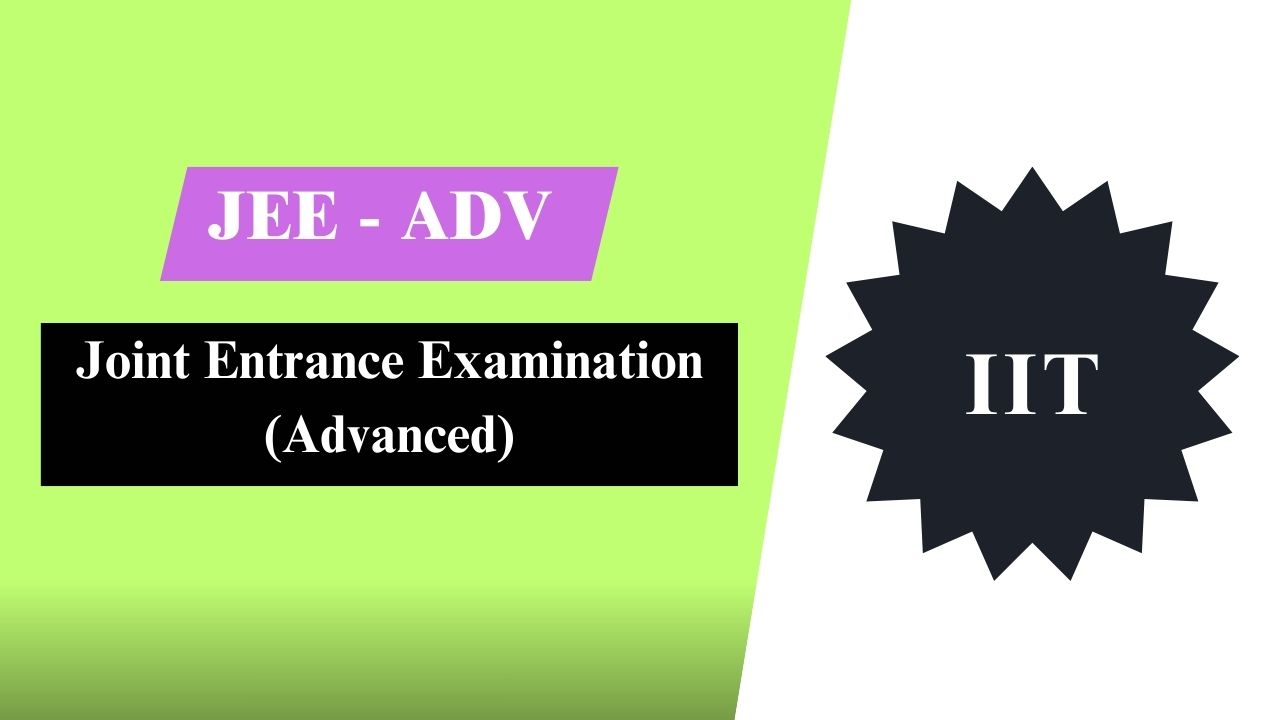What is NEST Entrance Exam (National Entrance Screening Test)? - Eligibility, Colleges & Exam Pattern

What is NEST Exam?
NEST exam (National Entrance Screening Test) is a national level entrance exam. This examination is mainly conducted for admission to the five-year Integrated MSc course at NISER Bhubaneswar and CEBS Mumbai. It is the only national examination in India which is conducted for admission to only two specific institutes. This exam is held once every year and is organized by National Institute of Science Education and Research (NISER) and University of Mumbai - DAE CEBS.
NEST exam is mainly for students with science background and its syllabus is mainly based on NCERT topics of class 11 and 12. NEST exam is conducted in online mode and all questions are objective type (MCQ).
After clearing this exam, the top performing candidates are awarded scholarships under the DISHA programme and admission to National Institute of Science Education and Research (NISER) and University of Mumbai - Department of Atomic Energy Centre of Excellence in Basic Sciences (UM-DAE CEBS).
NEST Exam Summary
| Detail | Information |
|---|---|
| Exam Name | NEST Entrance Exam |
| Full Form | National Entrance Screening Test |
| Conducting Body | NISER Bhubaneswar & UM-DAE CEBS |
| Purpose | Admission to integrated MSc programs in Basic Sciences |
| Target Candidates | 12th pass Science students who want to pursue an UG degree in Basic Sciences |
| Exam Level | National |
| Frequency | Once a year |
| Application Mode | Online |
| Official Website | Website |
NEST Exam Eligibility Criteria
- Class Qualification: Candidates must have passed the 10+2 (intermediate) exam or an equivalent examination.
- Education Background: Science stream.
- Subjects Requirement: Candidates should have studied Physics, Chemistry, Mathematics and Biology (PCMB).
- Age Limit: No age limit
- Percentage Requirement: A minimum of 60% marks for general category candidates, while SC/ST/PwD candidates need at least 55% marks.
NEST Exam Colleges
Candidates qualified through the NEST exam (National Entrance Screening Test) are granted admission to two premier autonomous science institutes established by the Government of India, NISER (National Institute of Science Education and Research) and UM-DAE CEBS (University of Mumbai - DAE Centre for Excellence in Basic Sciences).
Both these institutes were established as autonomous science institutes by the Government of India in 2007 and today are counted among the top autonomous science institutes in India.
The word "autonomous" here means self-governed institutes, i.e. institutes that independently decide their academic curriculum, mode of study and evaluation process.
1. NISER
NISER (National Institute of Science Education and Research), Bhubaneswar is a premier autonomous educational institute working under the Department of Atomic Energy, Government of India. The institute is located near Jatni, Bhubaneswar in Odisha and is known for high quality education and research in the field of science.
The objective of NISER is to inspire students for scientific thinking, research and innovation. The institute offers the following major programs:
- 5 Year Integrated B.Sc + M.Sc Program
- Integrated M.Sc + Ph.D Course
- Ph.D program
2. UM-DAE CEBS
UM-DAE CEBS (University of Mumbai - Department of Atomic Energy Center for Excellence in Basic Sciences) is a premier autonomous science institute located in Kalina Campus, Santacruz, Mumbai. The institute has been established with the collaboration of Department of Atomic Energy (DAE) and University of Mumbai.
UM-DAE CEBS is equivalent to NISER Bhubaneswar in terms of structure and objectives, and its main objective is to provide students with excellent education and research opportunities in the field of Science. The institute offers the following major programs:
- 5 Year Integrated B.Sc + M.Sc Program
- Ph.D program
Seats of NISER & UM-DAE CEBS Institute
1. NISER Institute Seats
Total 200 seats are available for admission in NISER (National Institute of Science Education and Research), Bhubaneswar. The distribution of seats is done as per reservation norms of Government of India as follows:
| Category | No of Seats |
|---|---|
| General | 101 |
| OBC - NCL | 54 |
| SC | 30 |
| ST | 15 |
| Divyangjan | 5% each category |
| Total Seats | 200 |
2. UM-DAE CEBS Institute Seats
A total of 57 seats are available for admission in UM-DAE CEBS (University of Mumbai - Department of Atomic Energy Centre of Excellence in Basic Sciences), Mumbai. The category wise distribution of seats is as follows:
| Category | No of Seats |
|---|---|
| General | 23 |
| EWS (General) | 6 |
| OBC - NCL | 15 |
| SC | 9 |
| ST | 4 |
| Divyangjan | 5% each category |
| Total Seats | 57 |
NEST Exam Benifits
NEST exam (National Entrance Screening Test) is a very prestigious competitive exam, which provides many benefits to students interested in higher education and research in the field of science. If you clear the NEST exam, many golden opportunities open up for you.
- Candidates who clear the NEST exam get direct admission in two top academic institutes of India, NISER (National Institute of Science Education and Research) Bhubaneswar and UM-DAE CEBS Mumbai (University of Mumbai - Centre of Excellence in Basic Sciences under Department of Atomic Energy). Both these institutes function under DAE (Department of Atomic Energy) of the Government of India and provide excellent education in the field of science.
- Scholarship of 5,000 per month: Students selected through the NEST exam are given a scholarship of 5,000 per month under the disha program (Department of Atomic Energy Innovation & Startup Hub for Applied Sciences) during the five-year integrated M.Sc course. This scholarship amounts to a total of 6,00,00 annually.
- Apart from this, candidates are given additional scholarship upto Rs.2,00,000 for summer internships and projects.
- After completing the M.Sc program, candidates get the opportunity to get recruited in the posts like Junior Scientist or Research Assistant in BARC, ISRO, DRDO, IISc and other prestigious institutes.
- Students who pass the NEST exam get opportunities to pursue PhD programs in prestigious universities in India and abroad.
NEST Exam Pattern
The pattern of NEST (National Entrance Screening Test) exam is completely based on science subjects. It is a computer based test (CBT), which is conducted in English language only. A total of 68 multiple choice questions of MCQ type are asked in the exam.
This entire exam is of 200 marks in total. There are four major sections in this exam. Around 17 questions are asked from each section, whose total value is 50 marks.
| Medium | English |
| Exam mode | Computer Based Test (CBT) |
| Section |
|
| Total question | 68 |
| Total marks | 200 |
| Duration | 3:30 hours |
| Subject wise question |
|
| Subject wise Marks |
|
| Sylabus | 11th & 12th NCERT |
How to Apply NEST Exam?
1. Registration
- Go to the NEST exam official website.
- On the homepage click on the link for "Online Registration".
- An instruction panel will appear, carefully read the instructions & then click on the "I Agree" button.
- Next the registration form will appear, where the candidate needs to enter details such as full name, date of birth (DOB), 10th class roll number, year of passing 10th, mobile number and email ID. Click on the "Generate OTP" button, then enter the captcha and the OTP received to verify.
- Once the OTP is verified agree to the declaration click the "Reverify" button to check details and then click "Submit".
- After successful registration the registration number and password will be sent to the registered email and mobile via SMS.
2. Application form
Click on the "Go to Application" button to access the application form and follow the steps below to complete application:
- Personal Details: Enter guardians details, both present and permanent addresses accurately and Click "Save & Next" to proceed.
- Qualification Details: enter educational qualifications (10th and 12th grades) details and click the "Save & Next" button to continue.
- Document Upload: Select preferred exam city and upload the required documents including a recent passport sized photograph and signature & click "Save & Next" to move forward.
- Payment Details: Check the declaration box, enter the captcha and click "Submit" button. After submission choose one of the available payment methods to pay the application fee.
NEST Exam Center
The NEST exam is conducted at Computer Based Test Centres (CBT Centres) in various major cities across the country. Candidates can choose their preferred exam centre while filling their application form. The list of exam centres for the NEST exam is released every year on the official website. Here is a list of some exam centres.
| Sr.no | Center | State |
|---|---|---|
| 1 | Port Blair (Sri Vijaya Puram) | Andaman and Nicobar Island (AN) |
| 2 | Guntur | Andhra Pradesh (AP) |
| 3 | Kurnool | Andhra Pradesh (AP) |
| 4 | Rajahmundry | Andhra Pradesh (AP) |
| 5 | Tirupathi | Andhra Pradesh (AP) |
| 6 | Vijayawada | Andhra Pradesh (AP) |
| 7 | Visakhapatnam | Andhra Pradesh (AP) |
| 8 | Vizianagaram | Andhra Pradesh (AP) |
| 9 | Naharlagun-Itanagar | Arunachal Pradesh (AR) |
| 10 | Dibrugarh | Assam (AS) |
| 11 | Guwahati | Assam (AS) |
| 12 | Tezpur | Assam (AS) |
| 13 | Bhagalpur | Bihar (BR) |
| 14 | Darbhanga | Bihar (BR) |
| 15 | Gaya | Bihar (BR) |
| 16 | Patna | Bihar (BR) |
| 17 | Bhilai Nagar | Chhattisgarh (CG) |
| 18 | Raipur | Chhattisgarh (CG) |
| 19 | New Delhi | Delhi (DL) |
| 20 | Panaji | Goa (GA) |
| 21 | Ahmedabad | Gujarat (GJ) |
| 22 | Bhuj | Gujarat (GJ) |
| 23 | Rajkot | Gujarat (GJ) |
| 24 | Surat | Gujarat (GJ) |
| 25 | Bilaspur | Himachal Pradesh (HP) |
| 26 | Hamirpur | Himachal Pradesh (HP) |
| 27 | Mandi | Himachal Pradesh (HP) |
| 28 | Shimla | Himachal Pradesh (HP) |
| 29 | Hisar | Haryana (HR) |
| 30 | Ambala | Haryana (HR) |
| 31 | Jammu | Jammu and Kashmir (JK) |
| 32 | Srinagar | Jammu and Kashmir (JK) |
| 33 | Bokaro Steel City | Jharkhand (JH) |
| 34 | Dhanbad | Jharkhand (JH) |
| 35 | Jamshedpur | Jharkhand (JH) |
| 36 | Ranchi | Jharkhand (JH) |
| 37 | Ballari | Karnataka (KA) |
| 38 | Bengaluru | Karnataka (KA) |
| 39 | Hubballi (Hubli) | Karnataka (KA) |
| 40 | Kalaburgi | Karnataka (KA) |
| 41 | Mangaluru (Mangalore) | Karnataka (KA) |
| 42 | Mysuru (Mysore) | Karnataka (KA) |
| 43 | Alappuzha | Kerala (KL) |
| 44 | Ernakulam | Kerala (KL) |
| 45 | Idukki | Kerala (KL) |
| 46 | Kannur | Kerala (KL) |
| 47 | Kasaragod | Kerala (KL) |
| 48 | Kollam | Kerala (KL) |
| 49 | Kottayam | Kerala (KL) |
| 50 | Kozhikode | Kerala (KL) |
| 51 | Malappuram | Kerala (KL) |
| 52 | Palakkad | Kerala (KL) |
| 53 | Pathanamthitta | Kerala (KL) |
| 54 | Thiruvananthapuram | Kerala (KL) |
| 55 | Thrissur | Kerala (KL) |
| 56 | Leh | Ladakh (LA) |
| 57 | Bhopal | Madhya Pradesh (MP) |
| 58 | Gwalior | Madhya Pradesh (MP) |
| 59 | Indore | Madhya Pradesh (MP) |
| 60 | Jabalpur | Madhya Pradesh (MP) |
| 61 | Ahmednagar | Maharashtra (MH) |
| 62 | Akola | Maharashtra (MH) |
| 63 | Chhatrapati Sambhaji Nagar (Aurangabad) | Maharashtra (MH) |
| 64 | Jalgaon | Maharashtra (MH) |
| 65 | Kolhapur | Maharashtra (MH) |
| 66 | Mumbai | Maharashtra (MH) |
| 67 | Nagpur | Maharashtra (MH) |
| 68 | Nanded | Maharashtra (MH) |
| 69 | Pune | Maharashtra (MH) |
| 70 | Ratnagiri | Maharashtra (MH) |
| 71 | Solapur | Maharashtra (MH) |
| 72 | Shillong | Meghalaya (ML) |
| 73 | Imphal | Manipur (MN) |
| 74 | Aizawl | Mizoram (MZ) |
| 75 | Dimapur | Nagaland (NL) |
| 76 | Kohima | Nagaland (NL) |
| 77 | Angul | Odisha (OD) |
| 78 | Balangir | Odisha (OD) |
| 79 | Balasore | Odisha (OD) |
| 80 | Bargarh | Odisha (OD) |
| 81 | Baripada | Odisha (OD) |
| 82 | Berhampur-Ganjam | Odisha (OD) |
| 83 | Bhawanipatna | Odisha (OD) |
| 84 | Bhubaneswar | Odisha (OD) |
| 85 | Cuttack | Odisha (OD) |
| 86 | Dhenkanal | Odisha (OD) |
| 87 | Jharsuguda | Odisha (OD) |
| 88 | Rayagada | Odisha (OD) |
| 89 | Rourkela | Odisha (OD) |
| 90 | Sambalpur | Odisha (OD) |
| 91 | Bhatinda | Punjab (PB) |
| 92 | Jalandhar | Punjab (PB) |
| 93 | Mohali | Punjab (PB) |
| 94 | Puducherry | Puducherry (PY) |
| 95 | Bikaner | Rajasthan (RJ) |
| 96 | Jaipur | Rajasthan (RJ) |
| 97 | Jodhpur | Rajasthan (RJ) |
| 98 | Kota | Rajasthan (RJ) |
| 99 | Udaipur | Rajasthan (RJ) |
| 100 | Gangtok | Sikkim (SK) |
| 101 | Chennai | Tamil Nadu (TN) |
| 102 | Coimbatore | Tamil Nadu (TN) |
| 103 | Madurai | Tamil Nadu (TN) |
| 104 | Salem | Tamil Nadu (TN) |
| 105 | Tiruchirappalli | Tamil Nadu (TN) |
| 106 | Tirunelveli | Tamil Nadu (TN) |
| 107 | Hyderabad | Telangana (TS) |
| 108 | Karimnagar | Telangana (TS) |
| 109 | Warangal | Telangana (TS) |
| 110 | Agartala | Tripura (TR) |
| 111 | Agra | Uttar Pradesh (UP) |
| 112 | Aligarh | Uttar Pradesh (UP) |
| 113 | Gorakhpur | Uttar Pradesh (UP) |
| 114 | Kanpur | Uttar Pradesh (UP) |
| 115 | Lucknow | Uttar Pradesh (UP) |
| 116 | Noida | Uttar Pradesh (UP) |
| 117 | Prayagraj (Allahabad) | Uttar Pradesh (UP) |
| 118 | Varanasi | Uttar Pradesh (UP) |
| 119 | Dehradun | Uttarakhand (UK) |
| 120 | Haldwani | Uttarakhand (UK) |
| 121 | Roorkee | Uttarakhand (UK) |
| 122 | Asansol | West Bengal (WB) |
| 123 | Berhampur | West Bengal (WB) |
| 124 | Burdwan | West Bengal (WB) |
| 125 | Durgapur | West Bengal (WB) |
| 126 | Hooghly | West Bengal (WB) |
| 127 | Kalyani | West Bengal (WB) |
| 128 | Kolkata | West Bengal (WB) |
| 129 | Siliguri | West Bengal (WB) |
NEST Exam Advantages
Here are the advantages given below that explains why NEST exam is a great opportunity for students:
- Admission to Top Science Institutes: By clearing the NEST exam candidates gain entry into prestigious science research institutions in India, such as NISER and UM-DAE CEBS. this institute are renowned for their advanced education and excellence in scientific research.
- Scholarship Benefits: Selected candidates through the NEST exam receive a monthly stipend and financial assistance to support their academic and research endeavors.
- Research Oriented Curriculum: NISER and UM-DAE CEBS institutes offer a research-focused curriculum that equips students with strong scientific research and problem-solving skills, preparing them to meet global research standards.
- Career Opportunities in Research & Development: Graduates from NISER and UM-DAE CEBS have excellent career prospects in reputed research organizations and national laboratories.
- High-Quality Faculty: NISER and UM-DAE CEBS have highly qualified and experienced faculty, providing world-class education and mentorship to students.
- Government Job Prospects: Graduates from these institutes have job opportunities in prestigious government research organizations such as ISRO, BARC and DRDO.
- Affordable Fees: The fees at NEST institutions are lower compared to many other government and private institutions, making high-quality education more accessible.
NEST Exam Disadvantages
While the NEST exam gives students a chance to get admission into top science institutes in India, it also has some disadvantages that students may have to face:
- Limited Seats: NEST is a national-level exam with a high number of applicants, but the seats are very limited across all categories. NISER offers only 200 seats, while UM-DAE CEBS has only 57 seats. This limited availability means that many talented candidates may face difficulties in securing admission to their desired institute.
- High Competition Level: The National Entrance Screening Test (NEST) is highly competitive, as it is the pathway to prestigious institutes like NISER and UM-DAE CEBS. Due to the limited number of seats, the competition level is extremely high. Each year, approximately 35,000 to 45,000 students apply for this exam, leading to an average of 136 to 175 candidates vying for each of the 257 seats across both institutes. As a result, the success rate remains only between 0.57% and 0.73%, making admission exceptionally challenging.
- Limited Institutes: NEST provides admission to only two institutes, NISER and UM-DAE CEBS. With only these options, students have limited flexibility in choosing their institution.
- Location Constraints: NISER is located in Bhubaneswar and UM-DAE CEBS is in Mumbai. These specific locations may not be easily accessible for all students, creating potential challenges for those from distant areas.
- Tough Selection Process: The selection process for NEST is rigorous and demanding, which can create high academic pressure and stress for students.
Quick Links
- Common Admission Test (CAT) Exam
- Central Teacher Eligibility Test (CTET) Exam
- IISER Apptitude Test (IAT) Exam
- JEE Advanced Exam
- JEE Mains Exam
- National Entrance Screening Test (NEST) Exam
- National Talent Search Examination (NTSE) Exam
- RRB Junior Engineer (JE) Exam
- RRB Non-Technical Popular Categories (NTPC) Exam
- SBI Junior Associate (Clerk) Exam
- SBI Probationary Officer (PO) Exam
- Staff Selection Commission Combined Graduate Level (SSC CGL) Exam
- Staff Selection Commission Multi Tasking Staff (SSC MTS) Exam
- SSC CGL Assistant Audit Officer (AAO)
- SSC CGL Assistant Enforcement Officer (AEO)
- SSC CGL Assistant Section Officer in Central Secretariat Service (ASO in CSS)
- SSC CGL Assistant Section Officer in Ministry of External Affairs (ASO in MEA)
- CBI Sub Inspector (SI)
- SSC CGL Central Excise Inspector
- Indian Administrative Service (IAS)
- SSC CGL Income Tax Inspector (ITI)
- SSC CGL Junior Statistical Officer (JSO)
- SSC CGL Preventive Officer (PO)
- RRB NTPC Railway Station Master
- BE/BTech Aerospace Engineering Course
- Bachelor of Business Administration (BBA) Course
- Bachelor of Computer Applications (BCA) Course
- Bachelor of Commerce (B.Com) Course
- Bachelor of Computer Science (BCS) Course
- Bachelor of Hotel Management (BHM) Course
- Bachelor of Science in Biotechnology (BSc Biotechnology) Course
- Bachelor of Science in Chemistry (BSc Chemistry) Course
- Bachelor of Science in Forensic Science (BSc Forensic) Course
- Bachelor of Science in Microbiology (BSc Microbiology) Course
- Bachelor of Science in Nursing (BSc Nursing) Course
- BE/BTech in Civil Engineering Course
- ITI Computer Operator and Programming Assistant (COPA) Course
- ITI Cutting & Sewing (Tailoring) Course
- ITI Electrician Trade Course
- ITI Electronic Mechanic Course
- ITI Fitter Trade Course
- ITI Hair & Skin Care (Beautician) Course
- ITI Digital Photography Course
- ITI Plumber Course
- ITI Surveyor Course





